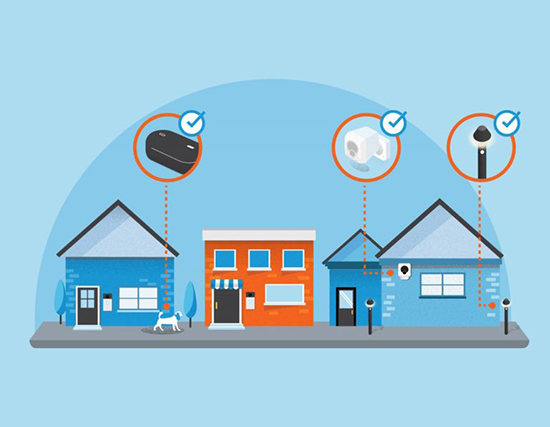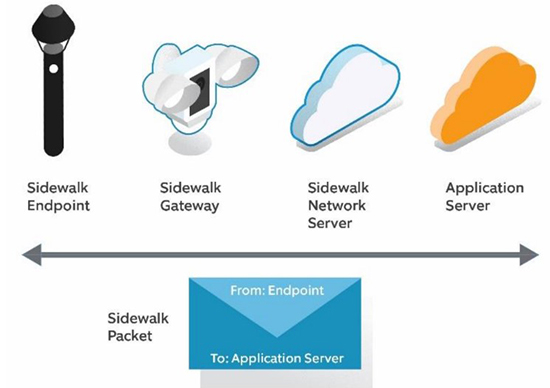Sneaky SidewalkDonât worry. Amazon has opted you in. Itâs up to you to opt out.
On June 9, Amazon quietly activated technology embedded, as far back as 2018, into devices like Ring Doorbell and Security Cameras and Alexa, Amazonâs artificial intelligence service. Amazonâs new service, called Sidewalk, is designed to create a low-bandwidth wireless network that can stretch up to half a mile. The technology is called a mesh network. Amazonâs smart devices have this proprietary mesh network, Sidewalk, built into them.
On June 9 Amazon activated this program, mostly unbeknownst to owners of the devices embedded with this program. You do not opt in to using this network; you have to opt out of using it.
What Is A Mesh Network?
A mesh network does not replace your router. It is a parallel network. While Wi-Fi âextendersâ simply boost your main routerâs Wi-Fi signal, mesh Wi-Fi systems actually create a whole new network, separate from your current routerâs Wi-Fi.
According to Jennifer van der Kleut writing for NortonLifeLock, âWith a traditional wireless network, the router (us.norton.com/internetsecurity-iot-smarter-home-what-is-router.html) is the only link broadcasting the wireless signal between your modem and the devices throughout your home or building. A mesh Wi-Fi system can give you multiple access points. Mesh networking uses a series of nodes (smart devices) that act like satellites and are able to communicate with each other.â
For example, your fridge can âtalkâ to your thermostat and your sprinkler system and your garage door. They can all talk to each other. âIn doing so, these nodes can amplify your signal and expand your Wi-Fi coverage throughout a larger area, reaching those distant or blocked spaces in your home and likely eliminating any dead zones.â A home filled with smart devices has the capability of forming a mesh network. Each device acts as a signal bridge to devices further from the originating signal from the router.
The network is managed through an app like Sidewalk. Amazonâs Sidewalk extends your signal into your neighborhood up to a half mile and connects your Wi-Fi signal to all your neighborsâ systems. If enough people are connected this way, there is a big new network, each user sharing a small slice of their bandwidth with everyone else on the network.
Whatâs Good About A Mesh Network?
If enough homes are signed onto the mesh network, when the Wi-Fi on your street goes down, you could still get connected to the internet through your neighborhood mesh networkâs connections to locations where the Wi-Fi is still working. Thatâs handy.
If your endpoint device, like a pet tracker or people tracker for adults with dementia, is out of range of your home Wi-Fi, you should be able to pick up its signal somewhere in the neighborhood mesh network. Thatâs about all itâs good for, so far. |
 Whatâs Shady About The Sidewalk Mesh Network?
Anyone can build a mesh network in their home to extend the range of their signal. But Sidewalk is an app, created by Amazon, and switched on without most peopleâs knowledge.
You have to ask, whatâs in it for Amazon? They are managing the app for free right now. As a kid, my father drilled into me that ânothing in life is free.â
According to Lauren David, âAmazon configured the devices to automatically opt in to share your internet connection, which is convenient and beneficial for the tech giant but could cause security and privacy breaches for users.â
Security expert Kim Komando writes, âAmazon customers are creating the network infrastructure, whether they are aware or not, by contributing some of their Internet bandwidth. âAmazon does not need to lay down any cables, fiber, or put together any sort of infrastructure. Amazonâs customers are buying products from them to make the network, which will lead to more user data being shared with Amazon.
âEssentially, this tech behemoth is relying on its own customers to establish a network that will provide a wealth of data and more information so Amazon can better target consumers.â
Security? What Security?
As far as security, each device in your home becomes a gateway for you to get out on the Sidewalk net and for intruders to get into your system. You are, essentially, on a public Wi-Fi connection 24/7.
Potential issues include that one userâs data can be seen by another user, thereâs a loss of anonymity, and data could be breached by an insecure network in the chain, explains Dave Hatter, a cybersecurity consultant for inTrust IT in Cincinnati, Ohio.
Equally worrisome is how easy it can be for hackers to break into any gadgets that are connected to Wi-Fi. âA breached device in one network allows hackers to breach devices in another network,â says Hatter. âIt only takes one device on the connected network to hack into the rest of those devices that are shared,â adds Komando. âAnd once that hacker has that access, your network and files are at risk, too.â
Do you trust your neighbors to make the constant updates on their systems to keep the network safe? Do you trust bad actors like China to manufacture microwaves or any smart appliances that wonât be gateway devices? Do you trust Amazon, who has a history of security breaches despite promises of three-layer encryption protection? Itâs a risk/benefit decision. Mine would be to opt out.
How To Opt Out
If you want to turn Sidewalk off, you do it in the Alexa app. In the app, go to More > Settings > Account Settings > Amazon Sidewalk. Thereâs a toggle there to turn off Sidewalk across all your devices for that account, or you can just disable the Community Finding feature. Thatâs the one that lets other peopleâs devices locate missing keys or pets, but it also gives away the approximate location of your Sidewalk Bridge, according to Carrie Marshall for msn.com. Thanks to Dave Winter for bringing this to my attention!
Vamos a Ver!  | | | | | | | | | | | | | | |
|
|
|
|
|













